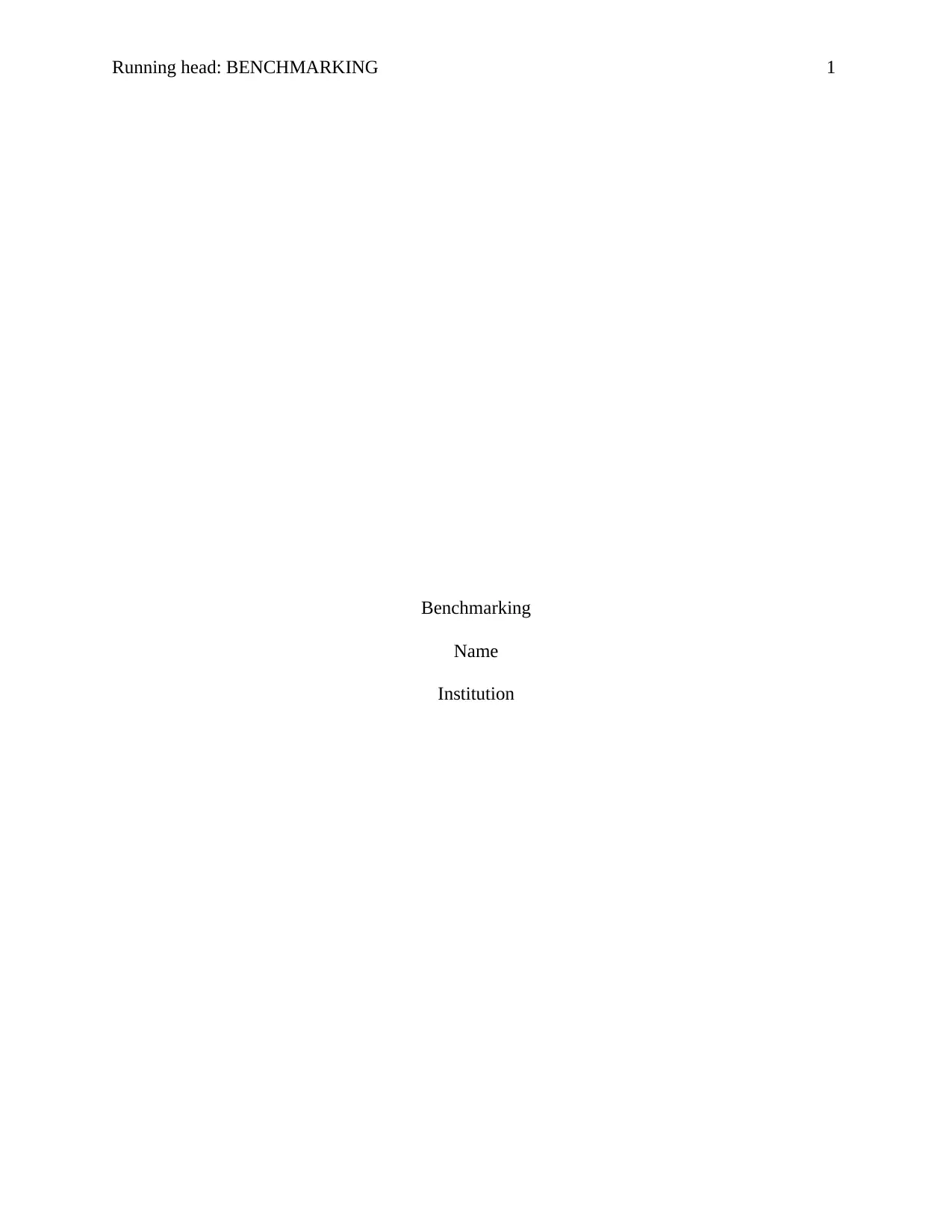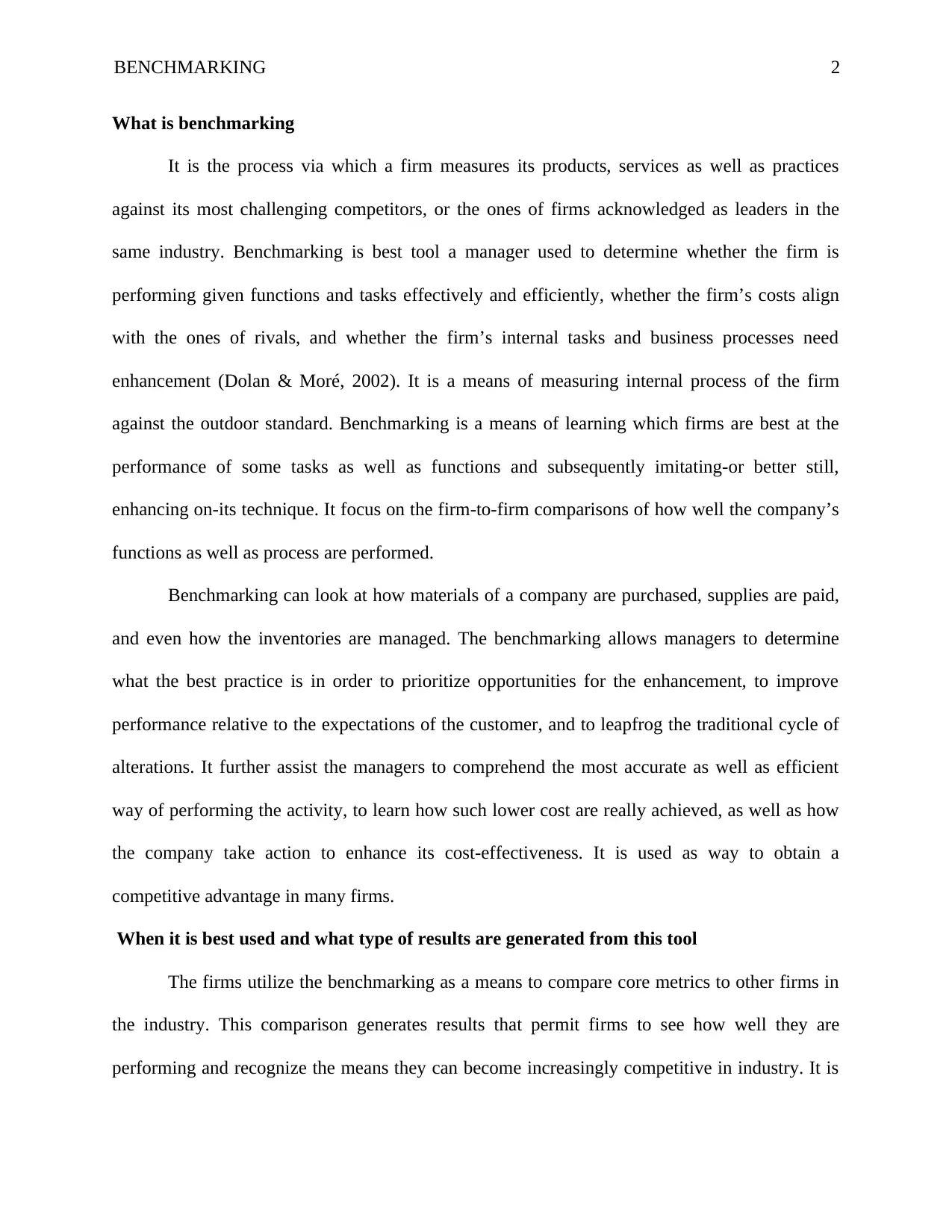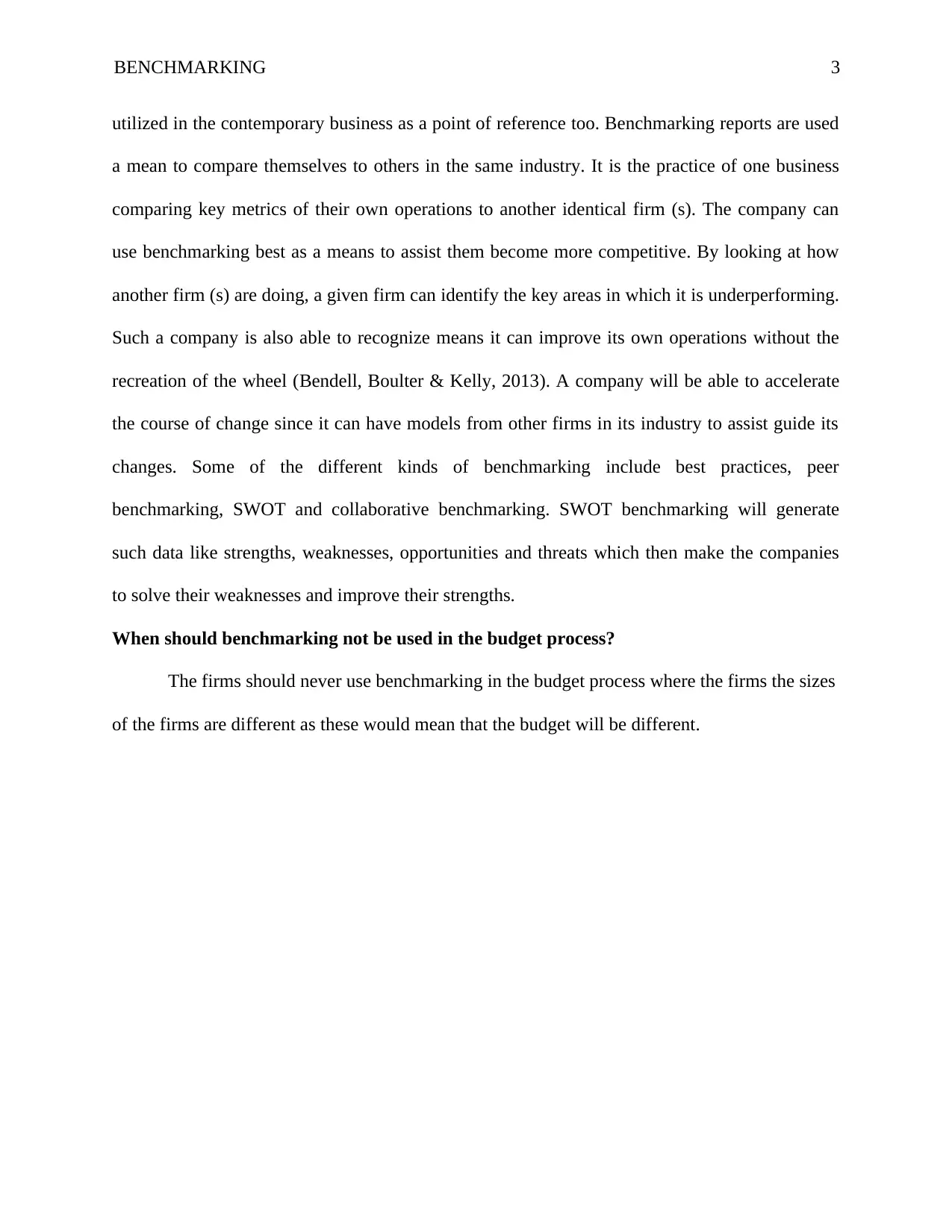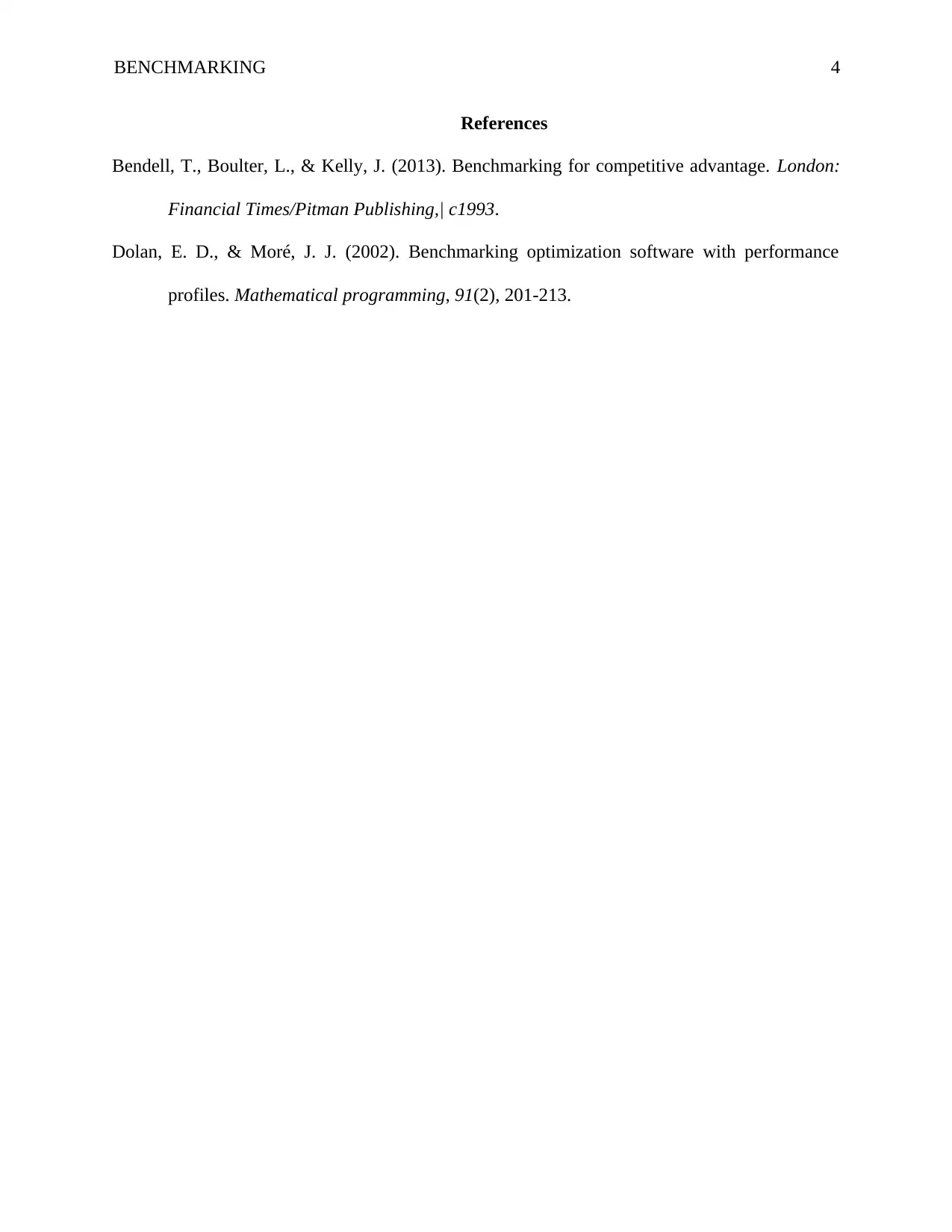Benchmarking Analysis: Firm Performance and Competitive Advantage
VerifiedAdded on 2020/04/01
|4
|652
|130
Project
AI Summary
The assignment delves into benchmarking as a strategic tool utilized by businesses to measure internal processes against external standards, facilitating firm-to-firm comparisons. It examines how companies utilize benchmarking to compare key metrics with industry counterparts to gain insights into performance levels and areas for improvement. The analysis highlights that benchmarking aids in identifying best practices, improving cost-effectiveness, and achieving competitive advantage without reinventing strategies. It further discusses the types of benchmarking like best practices, peer, SWOT, and collaborative, focusing on their ability to reveal strengths, weaknesses, opportunities, and threats to guide organizational change. However, it also cautions against using benchmarking in budget processes when firm sizes differ, as this may lead to inaccurate comparisons.
1 out of 4











![[object Object]](/_next/static/media/star-bottom.7253800d.svg)